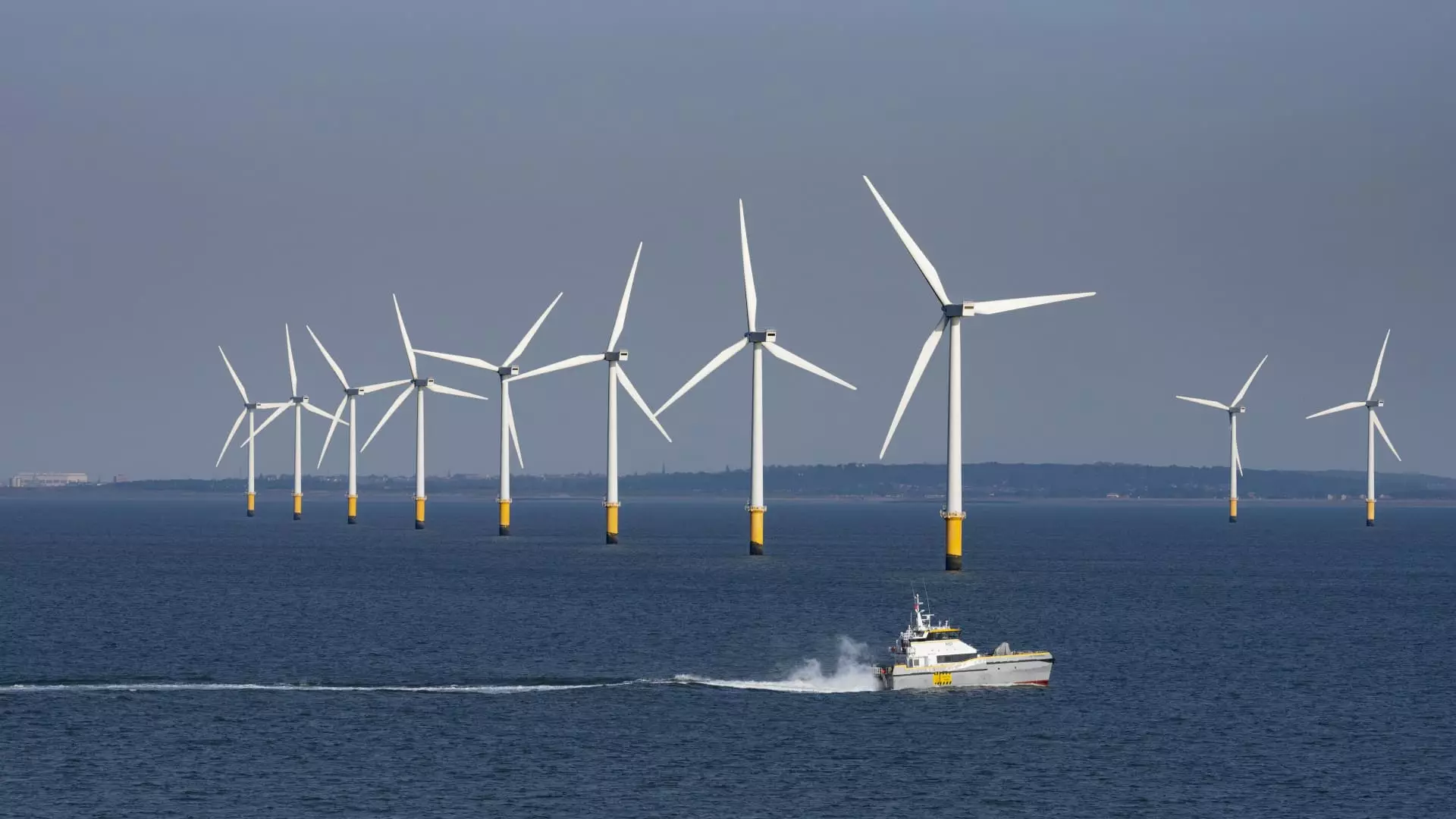Recent market reactions to the U.S. legislative developments in renewable energy reveal a curious phenomenon: fleeting optimism based on superficial legislative adjustments. European investors, eager to capitalize on any sign of policy stability, have temporarily celebrated the amendments to the “big beautiful bill,” believing they signal a new dawn for wind and solar sectors. However, this celebration masks deeper vulnerabilities, including the fragile foundations upon which these sectors rest. While immediate stock gains from wind turbine manufacturers and project developers might seem promising, they are ultimately built on a shaky bed of short-term reprieves rather than genuine, sustainable policy reform.
The amendments—mainly the removal of a tax on foreign components from “countries of concern,” mostly China—offer temporary relief without addressing core issues. These issues include long-term supply chain dependence, the threat of tariffs, and insurmountable funding challenges faced by the sector. The positive market buzz failed to recognize that such adjustments are little more than Band-Aids on a much larger wound. A closer examination reveals that these legislative changes, while superficially beneficial, do nothing to overhaul the structural shortcomings threatening the sector’s resilience in the long run.
Temporary Reprieves or Deceptive Mirage?
The decision to extend the deadline for projects to benefit from tax credits—moving from a strict end-of-2027 cut-off to a more lenient mid-2026 start requirement—may seem like a boon for immediate project timelines. Yet, it subtly shifts focus away from the broader strategic challenges that haunt the sector: reliance on unpredictable political support, global supply chain vulnerabilities, and mounting competition from China. Such legislative tweaks are akin to placing a bandage over a festering wound. They may provide short-term pain relief but do little to cure the underlying issues.
Furthermore, the removal of the cliff-edge deadline does not solve the fundamental problem of market saturation or the technological and infrastructural bottlenecks that hinder expansive growth. It merely postpones the inevitable mid-term recalibration of the sector’s ambitions. There is a dangerous tendency here—glossing over the need for a comprehensive, long-term strategy with short-term victories that are, in essence, temporary props, not pillars of lasting progress.
The Broader Implications: Cherry-Picking Wins in a Divided Policy Landscape
The divided nature of American politics ensures that meaningful policy continuity remains elusive, especially under an administration inclined toward deregulation and market-driven solutions. While European firms might temporarily benefit from the American market’s stability—especially as Europe grapples with its own regulatory uncertainties—the overarching long-term risks are substantial.
The real concern lies in the sector’s ability to sustain growth amid political swings that favor deregulation over genuine innovation and infrastructure modernization. The recent amendments, though they may stave off some immediate setbacks, fail to confront the broader question: is America truly committed to a sustainable green transformation, or is it merely engaging in a politically motivated, short-term pinning of hopes? European companies and investors must tread cautiously, aware that these legislative wins may be fleeting, and the sector’s long-term trajectory remains clouded by geopolitical tensions, supply chain dependencies, and a political climate prone to volatile policy shifts.
Rethinking the Narrative: The False Promise of “Green” Progress
There is an underlying fallacy in celebrating these legislative changes as harbingers of a green revolution. The truth is, the so-called progress is often an illusion—an ephemeral flicker of optimism overshadowing systemic weaknesses. Brandishing short-term legislative successes as proof of a “moving forward” strategy is dangerously naive. It ignores the larger, more pernicious risk: that without structural reforms, substantial investment in renewable infrastructure might never overcome the foundational hurdles of dependency on foreign supply chains, unpredictable policy environments, and fiscal uncertainties.
This scenario calls for a sober, centrist perspective—one that neither dismisses renewable energy’s importance nor naively believes legislative adjustments constitute a real breakthrough. It insists that true progress demands holistic policy realignment—focused on reducing dependency, fostering innovation at home, and building resilient infrastructure. As European nations face their own transition challenges, they must also remain vigilant about short-lived policy adjustments in the U.S. that could derail long-term commitments to decarbonization.
A Call for Genuine Commitment and Strategic Clarity
The real test for renewables lies beyond legislative slogans and market reactions. It is about strategic clarity and political resolve—incentivizing domestic manufacturing, diversifying supply chains, and investing in grid modernization. These are the elements that can sustain momentum in the face of political instability and global competition. Short-term legislative wins may buoy markets temporarily, but they are insufficient for a sustainable energy future.
European investors, policymakers, and industry leaders must view these recent developments through a critical lens—recognizing that such legislative tweaks are often symptomatic of deeper indecision. Genuine climate action requires more than passing bills; it demands a sustained, bipartisan commitment to the principles of innovation, domestic capacity building, and infrastructure resilience. Only then can the sector move beyond the illusion of progress and build a truly sustainable energy future that withstands the tests of political and economic upheavals.


Leave a Reply